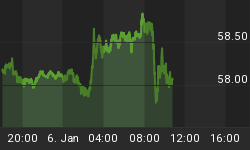The dollar loses ground across the board after net foreign purchases of capital flows into the US failed to cover the monthly trade deficit for the second consecutive month. Net foreign capital flows into the US assets stood at $47.4 billion in April, from $40.5 bln in March. The $47 billion was well below the $57 billion trade deficit in the same month.

POSITIVES
• Although net foreign purchases of Treasuries slowed to $24.7 bln in April from $27.8 bln in March, net official purchases of US Treasuries - which stem from central banks and governments - jumped to $13.9 billion in April from a net outflow of $14.9 billion in March. Although the negative figure in April was largely due to a $17 billion sale of Treasuries from Norway, overall official demand for US treasuries had been slowing. The fact that central bank purchases had rebounded was especially as private flows had eroded (see negatives).
• Net foreign purchases of US stocks soared 149% to $4.3 billion. Foreign residents remain net purchasers of US equities for the seventh straight month, maintaining a sustainable net flow position after the reelection of a Republican government in November. The reelection proved great news for equities as it meant the Bush Administration would not phase out the tax cuts of the past 2 years.
• US residents' purchases of foreign stocks fell 89% to $1.6 billion in April, after surging to their second highest level in March. As the US dollar showed signs of bottoming, some investors saw less incentive from loading on foreign assets to capture the currency gain.
NEGATIVES
• The fear of "hot money" leaving US assets had materialized. Private purchases of US Treasuries (mainly from hedge funds and asset managers) tumbled 77% to $9.9 billion, making up for 43% of total net purchases of US Treasuries. Private flows had made up an average of 74% of total net Treasury purchases in January and February before jumping to 155% in March when official accounts were net sellers.

• Gross holdings of US Treasuries by Caribbean centers (usually hedge funds registered offshore) tumbled 9% in April after averaging a monthly increase of 25% in the first 3 months of the year. We have long identified the danger of the increased concentration of foreign holdings of US assets by offshore hedge funds due to the volatile nature of these funds. The 9% drop in Treasury holdings by these offshore centers was consistent with the 77% drop in net purchases of Treasuries by private accounts.

The combination of a negative CPI, weak economic US data (falling retail sales, weakening ISM, slowing payrolls) and US inability to fund the trade deficit present a triple whammy for the US dollar as it not only reduces the need for further Fed tightening and dollar yield accumulation but also raises fears of sustainable deficit financing from abroad.
No more aberrations?
We mentioned last month that FX markets were preoccupied with the more current fundamentals of the US economy, namely employment payrolls and consumer spending, both of which have defied concerns of a soft patch. As those data had paved the way for expectations of Fed tightening, FX markets had no choice but to extend the dollar's rally. Just as the 11% drop in the March trade deficit may have been an aberration, the 52% drop in the March TICS might have also appeared d like one. Nonetheless, as we saw last week, the 12% bounce back in the April trade deficit meant that the initial deficit decline was an aberration, courtesy of a Chinese holiday-related drop in US imports.
A more disconcerting prospect for the dollar would be if the new sub-$50 billion figures in the TICS become part of an emerging trend. This would suggest that the US' inability to finance its swelling trade deficit will have to carry implications of higher interest rates - exactly what the Federal Reserve has been doing.
So far, the chances of a continued shortfall in the deficit financing are considerable. Sluggish growth in Europe and cooling Asian economies, prospects for US exports remain dubious. The import side of the US trade equation sees no let-off from the prospects of higher oil prices. With a 2% and a 3% projected rise in exports and imports, the trade deficit will hit $70 billion by September. The real question remains; will foreign purchases keep up with a swelling deficit? With the dollar already 9% higher in trade weighted terms year to date, this explains why foreign central banks have shown relatively less appetite for intervening in the dollar as they did during the currency's tumble in 2003 and 2004.
A continued shortfall in financing the trade deficit should push up market interest rates as foreigners require a higher rate of return on their investments. This higher rate will be brought about by a rise in bond yields as we have seen in today's reaction to the TICS report (10-year yield up to 4.14% from 4.11%). The backup in long yields should especially take part once the Fed's tightening campaign comes to an end this summer. In that case, the bond market will be doing the tightening for the Fed even as the latter steps back. The dollar could start to weaken once the market realizes that the economy cannot take further interest rate hikes by the Fed, especially after oil prices are expected to remain in their record territory, fed funds to be at least 325% higher and long yields to start backing up again.
Despite today's euro rally, we still see chance for one more down leg towards the $1.1900 level. But we adhere to the thesis that the swelling trade gap will become more noticeable in the FX markets especially as the Fed's rhetoric becomes more dovish. We see EURSUD ending the month at $1.24 and regaining $1.26 by end of August. End of year target revised down to $1.29.
















